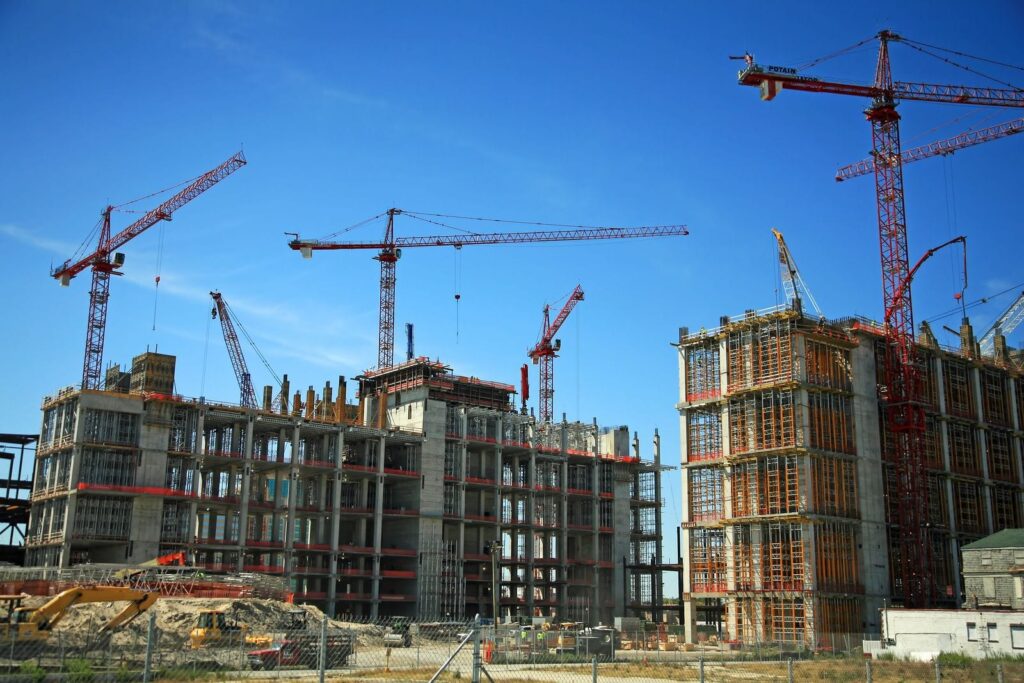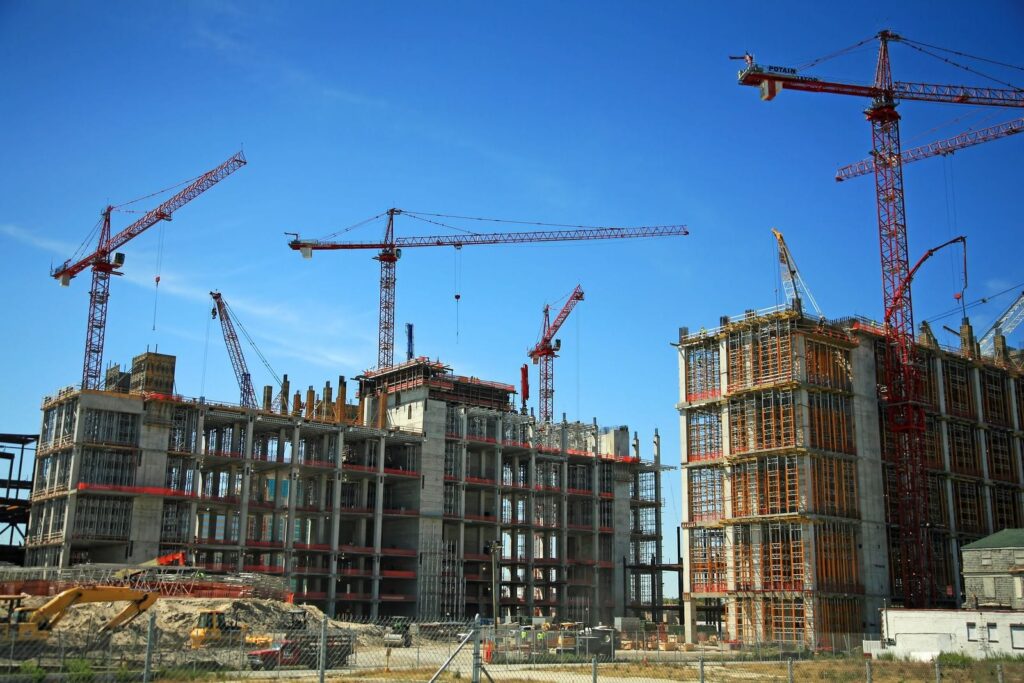Investments in commercial real estate development projects may provide exceptional profits. As a result, prospective investors regularly inquire about the process of commercial real estate development. This method is challenging for novice investors because successful developers often have much expertise. Consequently, regardless of their degree of knowledge, all investors must have a basic grasp of the development process to evaluate investment prospects properly. As such, this article will offer an outline of real estate development.
Specifically, the following themes will be discussed:
- Definition of Commercial Real Estate Development
- Significant Commercial Real Estate Development Steps
- Final Reflections
1. Definition
Commercial real estate development is the improvement of either undeveloped land or existing buildings. Therefore, building and development are intricately intertwined. However, they are not identical. Construction requires hammers and nails, but developers must find out how to pay for those hammers and nails.
In other words, commercial real estate developers combine the roles of senior strategist and project manager. They establish a vision for a real estate project, determine how to fund it, and then supervise its day-to-day execution to realize that goal.
Depending on the specific transaction, real estate developers may concentrate on anything from a ground-up building to renovations to value-added enhancements.
Requirements
Successful real estate developers have two essential characteristics: expertise and cash availability.
As the next section will demonstrate, development projects are riddled with hazards. Extensive expertise is required to mitigate this risk and complete a development effectively. Developers must comprehend and oversee activities relating to, among other things, commercial finance, municipal zoning, building, design, accounting, and the law. Developers may not be specialists in these subjects, but they must have the experience to comprehend how they fit into the larger project.
Developers also need access to finance. Developers must frequently invest tens or even hundreds of thousands of dollars in feasibility studies and planning before obtaining municipal clearance for a transaction. Moreover, developers often bear these expenditures independently and do not seek outside investors until they have secured local government clearance. Once permission is granted, commercial development projects are far more expensive than residential construction. Most ventures cost millions of dollars (or more), from soft expenses to hard expenditures to holding costs. Without access to substantial finance, developers cannot consummate transactions.
Risks and Rewards
Developers make the best returns among real estate investors, generally speaking. By structuring the project, developers establish real estate transactions that, if properly completed, would achieve their high necessary return level. If a project does not make this needed return on paper, the developers will either 1) modify the contract or 2) abandon it.
However, these large rewards are accompanied by far higher risks. Specifically, developers face two significant risks:
Sunk Expenses Before Transaction Approval:
Before breaking ground on any project, developers must make substantial financial investments. Before getting municipal clearance, developers incur costs for feasibility studies, legal fees, zoning applications, and architectural designs. Failure to get this permission, undoubtedly possible, would result in losing all of these early expenses.
Unanticipated Problems during Construction:
Larger construction projects might endure for numerous years. During this period, several unanticipated complications might occur and derail the growth. For instance, a deteriorating economy may deplete funding sources or render the project fiscally unviable. Or, an environmental hazard (such as finding toxins in groundwater) might develop, halting building and necessitating the expenditure of millions of dollars on cleanup.
Even though expertise mitigates the abovementioned development risks, they will always remain.
Major Real Estate Development Steps
In this part, we will detail the primary phases of any real estate development transaction. Individual transactions may vary and may include other processes. But if you comprehend the following, you will have a firm grasp of the real estate development process, enabling you to thoroughly examine possible investment prospects.
Step 1: Form the Development Group
Real estate developers cannot handle all aspects of a transaction by themselves. No one has this degree of competence in so many subjects. Instead, developers supervise and direct a group of topic matter specialists. Before proposing a transaction, developers must establish this team of specialists. This development team will comprise at a minimum:
Broker of Commercial Real Estate:
These real estate experts will aid you in locating possible transactions and, if requested, place renters throughout the lease-up time.
Real Estate Attorney:
These lawyers will help with the due diligence phase of any transaction (e.g., verifying a clear title), examine the purchase agreement, perform the actual settlement, and, if necessary, create future leasing agreements.
General Contractor:
These certified experts supervise the building process, including obtaining permits and managing subcontractors.
Architect:
Architects with a valid license are responsible for creating authorized design plans for a new or renovated building. They must have an intimate working connection with the general contractor.
Lender:
Developers must negotiate with lenders to fund a transaction, both for the acquisition/construction loan and, eventually, the permanent mortgage, unless they pay in cash.
Real estate manager:
These specialists oversee the daily operations of a property, including leasing and upkeep. Some developers maintain their own properties, but most employ outside management companies.
Interested investors:
Regarding funding, developers must have a pool of prospective investors. Thus, when they uncover a deal, they can swiftly acquire the required funds to complete it.
Step 2: Identify And Evaluate A Potential Deal.
Once the development team has been created, you may discover possible transactions. Some developers specialize in certain property kinds or markets, while others are open to any prospective transaction. Regardless of the method, the analysis of a possible trade is known as underwriting.
While the specifics of underwriting are outside the scope of this article, the purpose of underwriting is clear: to ensure that a deal’s figures are viable. In other words, 1) Do the anticipated future rents cover the anticipated operational expenditures and debt service? 2) Does the resulting net operating income justify the purchase and development costs? 3) Do the expected future financial flows provide returns that match your minimal requirements?
Step 3: Make A Suggestion and Enter Into an Agreement.
You may offer to acquire the empty land or existing building if the transaction underwrites (i.e., do the numbers make sense (unless you own the property)). You will likely negotiate the purchase conditions with the seller, including the purchase price, closing dates, and contingency periods, if you are the buyer (e.g., financing and appraisal, feasibility, zoning).
Step 4a: Confirm Design/Construction Plans and Permits.
During the underwriting phase, developers will put to use approximate rules of thumb for estimated construction hard and soft costs (e.g., $250 per square foot for complex expenses, 10 percent of hard costs for soft costs, etc.). Once the agreement is executed, you will need to work with the general contractor and architect to complete the design and construction plans and the associated costs.
Then, you, the architect, or the general contractor will submit these finished drawings to the appropriate municipality to get permits to begin building.
Step 4b: Verify Funding (Debt & Equity)
Developers may ensure their finance with established plans. For debt financing, creditors will demand, at a minimum, your complete underwriting template (generally referred to as a pro forma). They will also want to examine the design and construction plans if they are funding construction.
Their rules may differ if you raise equity capital (i.e., attracting outside investors). The majority of investors will also want pro forma and design proposals. In addition, investors will demand predictions of future cash distributions and return on investment since they will have their own return expectations. Before investing with a developer, most investors will also want to see a history of successful transactions.
Step 4c: Complete the Zoning and Feasibility Work
After entering into a contract, developers must undertake the required zoning and feasibility studies. Minimum requirements for feasibility include title, survey, and environmental due diligence. Zoning responsibilities will rely on the present zoning of the site. Even if you are not seeking a zoning change, you will still need a zoning confirmation letter. Local zoning officials provide these letters to developers, effectively stating that the construction may proceed as planned.
Changing the zoning law needs far more effort and, often, money. Depending on the municipality and nature of the modification, you may be required to submit an application for a particular use permit or a complete rezoning. In rare instances, developers may close on a contract before finishing this procedure, although doing so considerably increases risk.
Step 5: Sign The Agreement And Start Construction.
Assuming that your transaction passes all due diligence and feasibility standards, you will ultimately consummate the deal. Closing (or settlement) is the legal procedure for acquiring property from the seller. And if utilizing debt financing, this often happens simultaneously with the acquisition/construction loan closing.
For the developer, the construction phase involves monitoring the general contractor’s work, keeping related financial records, and making periodical requests for construction loan draws. The general contractor or developer will apply to the municipality for a certificate of occupancy or CO upon completion of construction. Following the issue of the CO, the property is habitable.
Step 6: Complete the Lease-Up Procedure
The developer (or property management) may begin leasing the property after the CO has been granted. Depending on the kind of property, this might include anything from locating firms to occupy offices or industrial sites to finding people to rent flats. A property is considered “leased up” if rented out.
Step 7: Complete The Permanent Loan Closing.
Permanent funding is contingent on leasing out the property as early as feasible. Before approving a permanent mortgage, lenders will need a specific proportion of the building’s spaces to be leased (often 95 percent or higher). However, most developers choose their permanent lenders well before this time. Thus, they may have all loan documentation in place, enabling them to apply as soon as they reach the lease-up criterion.
Once the property is wholly leased, and the permanent loan is closed, the property has been “stabilized.” Depending on your development goal, you will now either sell the property or continue with steady operations.
3. Final Reflections
This article is not intended to turn novice investors become specialists in real estate development. Instead, we wish to provide you with a comprehensive overview of the procedure for analyzing possible investment prospects more thoroughly.
******************************
Come join us! Email me at mark@dolphinpi.us to find out more about our next real estate investment.



